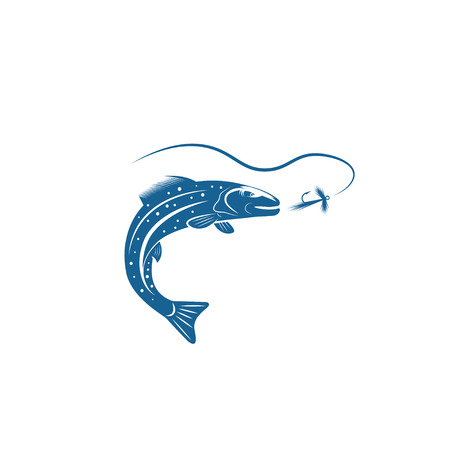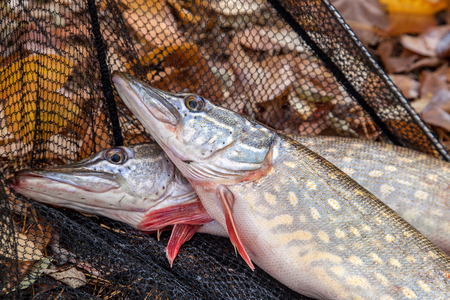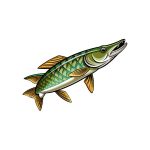Understanding Jig Types and Components
When it comes to jig fishing for bass, understanding the different types of jigs and their components is key to boosting your success year-round. Each style of jig has its own strengths and ideal conditions. Let’s break down the most popular jig types and what makes each one unique.
Common Bass Jig Types
| Jig Type | Best For | Description |
|---|---|---|
| Football Jig | Rocky bottoms, deep water | Shaped like a football to reduce snagging; great for dragging along hard cover. |
| Flipping Jig | Heavy cover, shallow water | Built with a stout hook and weed guard; perfect for punching through vegetation or brush. |
| Swim Jig | Open water, grass lines | Sleek design for swimming through cover; mimics baitfish action when retrieved steadily. |
| Finesse Jig | Clear water, pressured fish | Smaller profile with a light wire hook; ideal for subtle presentations. |
Trailers: Matching the Hatch
The trailer you pair with your jig can make all the difference. Trailers add bulk, movement, and realism to your presentation. Here are a few common trailer styles:
Craw-Style Trailers
Mimic crawfish, which are a favorite meal for bass. Great for flipping and football jigs. Choose a more aggressive kicking action in warmer water and a subtle movement in colder temps.
Paddle Tail Swimbaits
Perfect for swim jigs. Their tail motion adds life-like swimming action that triggers reaction bites, especially in clear water.
Creature Baits
Add extra appendages and movement. Excellent when you need to create more disturbance or present something different.
Skirt Materials Matter
The skirt on a jig adds flash and body, making your bait look more alive. Most skirts are made from silicone or rubber:
- Silicone Skirts: Come in countless color options and hold up well over time. Ideal for customizing your presentation.
- Living Rubber Skirts: Offer a natural pulsing action in the water but have limited color choices. Great in cold water due to their lifelike movement at slow speeds.
The Right Hook Style
A strong, sharp hook is essential for solid hooksets and landing big bass. Most jigs come with either a heavy-wire or light-wire hook:
- Heavy-Wire Hooks: Used in flipping and football jigs where youre targeting big fish in thick cover.
- Light-Wire Hooks: Found on finesse jigs; easier to penetrate with lighter gear but not ideal for heavy cover or monster bass.
Tying It All Together
Selecting the right jig type, matching it with the right trailer, choosing appropriate skirt materials, and understanding hook styles will help you fine-tune your approach no matter the season or condition. Each component plays a role in how your jig performs—and how many bass end up in your boat.
2. Seasonal Jig Tactics and Adjustments
Jig fishing for bass isnt a one-size-fits-all approach—it changes with the seasons. From springtime spawns to icy winter days, adjusting your jig presentation can make all the difference in staying on the bite year-round. Let’s break down how to modify your tactics through each phase of the year.
Spring: Spawning Season
During the spawn, bass are focused on protecting their beds rather than feeding. This is when precision and subtlety matter most. Use smaller finesse jigs and present them slowly around known bedding areas like shallow flats or sandy coves. A craw-style trailer can trigger reaction bites from defensive bass.
Spring Jig Tips
- Jig Type: Finesse or compact flipping jigs
- Weight: 1/4 oz to 3/8 oz
- Trailer: Craw imitators with minimal action
- Presentation: Slow drag or slight hop near visible beds
Post-Spawn: Recovering and Feeding
After the spawn, bass move off beds and begin feeding heavily to recover. This is a great time to use swimming jigs around grass edges and points where bass ambush baitfish. Speed up your retrieve slightly and cover more water.
Post-Spawn Jig Tips
- Jig Type: Swim jigs
- Weight: 3/8 oz to 1/2 oz
- Trailer: Paddle tail swimbaits or twin tail grubs
- Presentation: Steady retrieve through submerged vegetation
Summer: Deep Water Patterns
In the heat of summer, bass often move deeper to find cooler water and stable oxygen levels. Football jigs shine here, especially when dragged across offshore structure like ledges, humps, or rock piles.
Summer Jig Tips
- Jig Type: Football jigs
- Weight: 1/2 oz to 3/4 oz
- Trailer: Creature baits or chunk-style trailers for bulk
- Presentation: Slow drag along bottom with occasional hops
Fall Transition: Follow the Bait
Bass become more active again during fall as they chase baitfish in preparation for winter. This is a great time for swim jigs and even skipping jigs under docks where fish might ambush prey.
Fall Jig Tips
- Jig Type: Swim jigs or skipping jigs
- Weight: 3/8 oz to 1/2 oz
- Trailer: Slim-profile swimbaits that mimic shad or minnows
- Presentation: Cover water quickly; target bait activity zones like creek mouths and pockets
Winter: Slow and Low
This is when things slow down big time. Bass get sluggish in cold water, so your jig presentation needs to match their mood. Go with a finesse jig and keep it tight to the bottom—less movement is more during this season.
| Winter Jig Strategy Breakdown | Details |
|---|---|
| Main Jig Type | Finesse jig with silicone skirt (or hair jig) |
| Suggested Weight | 1/4 oz to 3/8 oz depending on depth & wind conditions |
| Ideal Trailer Choice | Tight-action plastic chunk or pork rind trailer for subtle movement |
| Tactic Focus | Crawl slowly along rocky bottoms or around deep brush piles; dead-sticking works too! |
The key takeaway is simple: successful jig fishing means staying flexible. As the seasons change, so should your approach—from gear selection to retrieve style—if you want consistent bass action all year long.

3. Choosing the Right Gear for Jig Fishing
When it comes to jig fishing for bass, having the right gear can make all the difference between a slow day on the water and a successful one. The key is matching your rod, reel, line, and terminal tackle to the type of jig youre using and the specific conditions youre fishing in. Let’s break down what you need to know to set yourself up for success year-round.
Rod: Sensitivity and Power Matter
Jig fishing often involves detecting subtle bites near structure or along the bottom, so sensitivity is crucial. Youll want a rod that helps you feel everything happening at the end of your line.
| Rod Length | Power | Action | Best Use |
|---|---|---|---|
| 7’ – 7’6” | Medium Heavy to Heavy | Fast | Flipping jigs, deep water structure, heavy cover |
| 6’6” – 7’ | Medium | Fast | Finesse jigs, lighter cover, clear water presentations |
Reel: Gear Ratio for the Right Speed
Your reel should complement your jigging style. Gear ratio determines how fast you can retrieve line, which affects your presentation and hookset power.
| Gear Ratio | Retrieval Speed | Best For |
|---|---|---|
| 6.4:1 – 6.8:1 | Moderate | All-purpose jig fishing, good balance of power and speed |
| 7.1:1 – 8.1:1+ | Fast | Punching through cover, quick follow-up casts after missed strikes |
| 5.4:1 – 6.2:1 | Slow | Crawling jigs along cold bottom structures during winter months |
Line: Strength and Stealth in Balance
The type of line you use plays a major role in both how your jig performs and whether you get bit. Consider water clarity, cover density, and jig size when choosing between braid, fluorocarbon, or monofilament.
| Line Type | Pound Test Range | Best Conditions |
|---|---|---|
| Braided Line | 30–65 lb test (mainly) | Heavy cover, thick vegetation, flipping & punching jigs |
| Fluorocarbon Line | 12–20 lb test | Clear water, open structure, finesse jig techniques |
| Monofilament Line | 10–17 lb test | Muddy or stained water, floating jigs or slower fall rate needed |
Terminal Tackle: Hook Style and Jig Heads Make a Difference
The business end of your setup—the hook and jig head—needs to match your target environment and presentation style. Use stout hooks in dense cover and finer wire hooks for finesse applications.
Quick Tips:
- Football Jigs: Best for rocky bottoms; pair with fluorocarbon line and a medium-heavy rod.
- Casting Jigs: Versatile; work well around wood and brush piles.
- Punching Jigs: Ideal for matted vegetation; use with braid and heavy rods.
- Finesse Jigs: Great in cold or clear water; lighter rods and lines work best here.
Selecting gear tailored to your environment not only improves hook-up ratios but also gives you better control over your baits movement. Matching your setup to the conditions at hand lets you fish more confidently—and catch more bass all year long.
4. Jig Presentation Techniques and Retrieval Styles
To consistently catch bass year-round with a jig, its not just about where you fish—its how you work your bait. Mastering different retrieve styles can make all the difference in getting those strikes. Depending on the structure, depth, and water clarity, bass will respond differently to how your jig moves. Let’s break down the most effective jig presentation techniques used by seasoned bass anglers across the U.S.
Hopping
Hopping a jig mimics a crawfish or fleeing baitfish. This technique involves lifting your rod tip to make the jig bounce off the bottom and then letting it fall back down. The key here is timing and rhythm—bass often strike on the fall, so be ready.
When to Use Hopping:
- Structure: Rocky bottoms, gravel flats
- Depth: Shallow to mid-depth (5–15 feet)
- Water Clarity: Clear to stained
Dragging
This slower retrieve keeps your jig in contact with the bottom longer. Simply cast out, let the jig settle, then slowly pull it along the bottom with your rod tip before reeling in slack. It’s especially effective in colder water when bass are less active.
When to Use Dragging:
- Structure: Mud flats, drop-offs, ledges
- Depth: Mid-depth to deep (10–25 feet)
- Water Clarity: Stained to muddy
Swimming
If bass are suspended or chasing baitfish, swimming a jig is a killer technique. Cast out and reel in steadily while keeping your rod tip slightly up. Add slight twitches or pauses for more action.
When to Use Swimming:
- Structure: Weed edges, submerged vegetation
- Depth: Shallow to mid-depth (3–12 feet)
- Water Clarity: Clear to lightly stained
Pitching and Flipping
This close-range tactic excels when targeting heavy cover like docks, laydowns, or brush piles. Pitching allows for stealthy entries into tight spaces without spooking fish. After pitching, let the jig fall naturally—again, most bites come on the fall.
When to Use Pitching/Flipping:
- Structure: Docks, bushes, timber
- Depth: Shallow (1–8 feet)
- Water Clarity: Any clarity level
Retrieve Style Quick Guide
| Retrieve Style | Best Structure | Ideal Depth Range | Water Clarity |
|---|---|---|---|
| Hopping | Rocks, Gravel Flats | 5–15 ft | Clear to Stained |
| Dragging | Mud Flats, Drop-offs | 10–25 ft | Stained to Muddy |
| Swimming | Weed Edges, Vegetation | 3–12 ft | Clear to Lightly Stained |
| Pitching/Flipping | Docks, Brush Piles, Timber | 1–8 ft | Any Clarity Level |
No matter what time of year youre fishing for bass with a jig, knowing how to change up your retrieve based on conditions can dramatically improve your catch rate. Pay attention to how fish are reacting and don’t be afraid to mix things up until you find what works best that day.
5. Reading Water and Locating Bass
One of the biggest keys to successful jig fishing for bass year-round is knowing where to find them. Bass are structure-oriented fish, meaning they hang around areas that offer cover, depth changes, or both. By learning how to read the water and understand what lies beneath the surface, you can increase your chances of putting more bass in the boat.
Understanding Structure vs. Cover
Before diving into specific locations, it’s important to know the difference between structure and cover:
| Structure | Cover |
|---|---|
| Natural features like points, ledges, humps, creek channels, and drop-offs | Objects that bass use for hiding like brush piles, docks, grass beds, rocks, or fallen trees |
Bass will use both structure and cover throughout the year depending on seasonal patterns and feeding behavior.
Seasonal Bass Behavior
Bass change their location and behavior based on the time of year. Understanding these seasonal shifts helps you know where to throw your jig:
| Season | Typical Bass Location | Best Jig Strategy |
|---|---|---|
| Spring (Pre-spawn/Spawn) | Shallow flats near spawning bays, secondary points | Flip jigs near shallow cover like bushes or laydowns |
| Summer | Deeper ledges, main lake points, offshore structure | Use football jigs around ledges and brush piles in deeper water |
| Fall | Baitfish-driven areas: creek arms, shallow pockets with bait | Swim jigs through grass or around docks where shad are present |
| Winter | Deep holes, channel swings near bluff walls or deep brush piles | Crawl finesse jigs slowly along bottom in deep zones |
Key Locations to Target with Jigs
Docks
Docks provide shade and vertical structure. Skip a jig underneath for a chance at a lurking largemouth. Try targeting the darkest corners during sunny days.
Ledges & Drop-offs
Ledges hold bass year-round but especially in summer and winter. Dragging a football jig down a slope can trigger reaction bites from fish holding just off the edge.
Brush Piles & Fallen Trees
These are classic ambush spots. Pitching or flipping a jig into thick cover takes patience but can result in big bites. Use heavier jigs (1/2 oz or more) to punch through dense limbs.
Using Electronics & Lake Maps Effectively
Electronics (Fish Finders & Sonar)
A good graph helps you find offshore structure like humps, submerged timber, and bait balls. Look for signs of life—arches (fish), cover shadows, or hard-bottom transitions.
Lakemaps & GPS Tools
Poring over digital maps before hitting the water can reveal hidden gems. Look for contour lines that show sudden depth changes or isolated humps that could hold fish.
Quick Tips for Map Reading:
- Tight contour lines = steep drop-offs (good in summer/winter)
- Saddle areas between two humps often concentrate bass movement
- Main lake points are great ambush spots across multiple seasons
The more time you spend learning how bass relate to their environment—and how to use your tools to find them—the better your chances of success with a jig all year long.
6. Pro Tips and Common Mistakes to Avoid
If you want to catch bass like the pros using jigs, it’s not just about having the right gear — it’s about knowing how and when to use it. We’ve gathered insight from experienced bass anglers to help you fish smarter, not harder. Here’s how to level up your jig fishing game and avoid the traps that many weekend anglers fall into.
🎯 Pro Tips for Jig Fishing Success
1. Match Your Jig to the Conditions
Pros always adjust their jig size, color, and trailer based on water clarity, temperature, and time of year. For example, in clear water, they’ll go with a more natural presentation like green pumpkin or watermelon. In murky water, black and blue is a favorite go-to combo.
2. Master the Art of “Less Is More”
One of the most common mistakes beginners make is overworking the jig. Pros know that subtle movements often get more bites than aggressive ones. After casting, let your jig sit for a few seconds before giving it a slight hop or drag. Let the bass come to you.
3. Know Where Bass Are Holding
Understanding seasonal patterns is critical. In winter, bass hold deeper near structure. In spring and fall, they’re shallower and more active. Adjust your depth accordingly and don’t waste time fishing empty water.
🚫 Common Mistakes to Avoid
| Mistake | Why It Hurts Your Success | What To Do Instead |
|---|---|---|
| Overworking the Jig | Makes your presentation look unnatural | Use slower movements; let the jig sit between hops |
| Wrong Jig Size or Color | Can spook fish or go unnoticed | Match conditions: clear water = natural colors; stained water = bold colors |
| Fishing at the Wrong Depth | You won’t find fish where they’re not living | Adjust based on season and structure location |
| Ineffective Hooksets | You’ll miss bites or lose fish mid-fight | Practice firm but controlled hooksets with proper rod positioning |
| Ignoring Line Sensitivity | You won’t detect subtle bites, especially in cold water | Use fluorocarbon line for better sensitivity and sink rate |
Pro Tip:
If you’re getting short strikes (bites without hookups), consider trimming your trailer slightly or adding a stinger hook to increase hookup rates.
The Difference Between Weekend Anglers and Seasoned Pros
The real difference lies in consistency and attention to detail. Pros study their lakes, monitor weather patterns, adjust quickly, and stay patient. They don’t just rely on luck — they make every cast count.
Quick Checklist for Jig Fishing Like a Pro:
- [ ] Am I matching my jig size/color to current conditions?
- [ ] Am I working the jig too fast?
- [ ] Have I identified key structure and cover?
- [ ] Am I fishing at the correct depth for this season?
- [ ] Is my line sensitive enough to detect subtle bites?
- [ ] Did I retie after catching a fish or hitting structure?
Tuning into these habits can take your bass jig fishing from average to exceptional — all year long.


